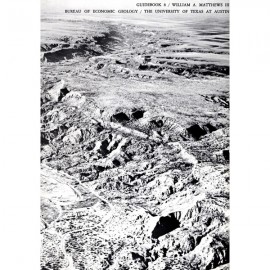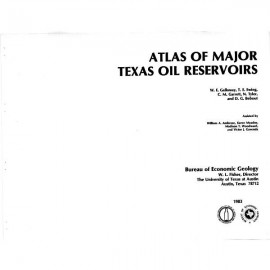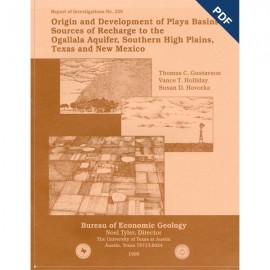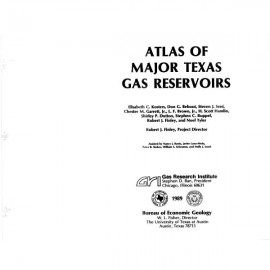Geological Circulars
-
Books & Reports
- Reports of Investigations
- Guidebooks
- Udden Series
- Geological Circulars
- Down To Earth
- Atlases of Major Oil and Gas Reservoirs
- Texas Memorial Museum Publications
- Environmental Geologic Atlas of the Texas Coastal Zone
- Mineral Resource Circulars
- Other Reports
- Seminars and Workshops
- Handbooks
- Submerged Lands of Texas
- Symposia
- Annual Reports
- Open File Reports
-
Maps & Cross Sections
- Thematic Maps
- Miscellaneous Maps, Charts & Sections
- Geologic Atlas of Texas
- STATEMAP Project Maps
- Geologic Quadrangle Maps
- Cross Sections
- Highway Geology Map
- Energy and Mineral Resource Maps
- Shoreline Change and Other Posters
- Wilcox Group, East Texas, Geological / Hydrological Folios
- Bouguer Gravity Atlas of Texas
- River Basin Regional Studies
- Featured Maps
- Posters
- Teachers & the Public
-
Geological Society Publications
- Gulf Coast Association of Geological Societies
- Alabama Geological Society
- Austin Geological Society
- Corpus Christi Geological Society
- Houston Geological Society
- Lafayette Geological Society
- Mississippi Geological Society
- New Orleans Geological Society
- South Texas Geological Society
- GCS SEPM Publications
- Historic BEG & UT Series
Hydrogeology and Hydrochemistry of Cretaceous Aquifers, Texas Panhandle and Eastern New Mexico. Digital Download
GC8803D
For a print version: GC8803.
GC8803D. Hydrogeology and Hydrochemistry of Cretaceous Aquifers, Texas Panhandle and Eastern New Mexico, by Ronit Nativ and G. N. Gutierrez. 32 p., 19 figs., 5 appendices, 1988. doi.org/10.23867/gc8803D. Downloadable PDF.
To purchase this publication in book format, please order GC8803.
ABSTRACT
Cretaceous rocks in the Southern High Plains, traditionally considered to be part of the High Plains aquifer and recharged by the overlying Ogallala aquifer, actually contain three aquifers with different recharge sources. Two separate subcrop areas of Cretaceous rocks underlie the Ogallala Formation. These subcrops are composed of sandstones, limestones, and shales and have a total thickness of as much as 250 ft (76 m). Three aquifers, the Trinity sandstone, the Edwards limestone, and the Duck Creek–Kiamichi sandstones and limestones, were identified within the Cretaceous section. Wherever the Ogallala aquifer is thin or missing, the Cretaceous aquifers are the main water supply. Major recharge sources are percolation through thick surficial alluvial deposits and sand dunes in New Mexico and northwestern Texas and leakage from the underlying Dockum aquifer in eastern New Mexico. Recharge from the overlying Ogallala aquifer is restricted to small parts of the study area. Elsewhere, differences in hydraulic heads and similarities in chemical and isotopic composition suggest cross-formational flow from Cretaceous aquifers into the overlying Ogallala Formation or the underlying Dockum Group.
Keywords: discharge, Dockum Group, Duck Creek Formation, Edwards limestone, Kiamichi Formation, New Mexico, Ogallala aquifer, oil-field brines, Panhandle, recharge, Southern High Plains, Texas, Trinity Group
Citation
Nativ, Ronit, and Gutierrez, G. N., 1988, Hydrogeology and Hydrochemistry of Cretaceous Aquifers, Texas Panhandle and Eastern New Mexico: The University of Texas at Austin, Bureau of Economic Geology, Geological Circular 88-3, 32 p. doi.org/10.23867/gc8803D.






